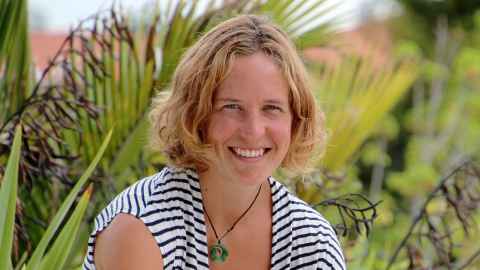Unravelling the mystery of hydrocarbon-producing algae
11 April 2019
Associate Professor Jane Allison is part of an international team awarded US$1.2 million to investigate hydro-producing algae.

The Human Frontier Science Program (HFSP) funds cutting edge research on understanding complex mechanisms in living organisms. It is highly competitive, with less than 4% of applications funded in 2019.
Associate Professor Allison says the research project will focus on hydrocarbons that are similar to the chemical compounds found in diesel. Hydrocarbons are produced in vast quantities in the ocean by algae and by microbes called cyanobacteria. The amount of hydrocarbon produced is vast, totalling up to 800 million tonnes per annum, or up to 20% of annual crude oil production.
Luckily, these hydrocarbons are consumed by other bacteria living in the oceans. These bacteria are already known to have consumed the alkane components of petroleum released during ecological catastrophes such as the Exxon Valdez tanker spill and the Deepwater Horizon blowout.
Associate Professor Allison and colleagues recently found that hydrocarbons accumulate inside the algal cell membrane – the layer of fatty molecules that encases cells, preventing the contents from spilling out and the outside world getting in.
The reason why cyanobacterial and algal cells would accumulate hydrocarbons inside their membranes is not understood but the team predicts it may promote membrane flexibility and curvature, which are essential for cell growth and division, and for packing the photosynthetic machinery into the cell.
“It is important to understand why cyanobacteria and algae produce large quantities of hydrocarbons and why they are in the cell membrane, as there are ongoing endeavours to harvest hydrocarbons from these organisms to be used as biofuels,” Professor Allison says.
“If they are reliant on having hydrocarbons in their cell membranes in order to survive, that might limit the amount that can be harvested during an oil spill for example.”
The team also foresees applications of knowledge gained to improve control in the engineering of artificial cells. The work has a number of medical applications, including delivery of drugs, enzymes to counteract metabolic diseases, and gene therapy.
These artificial cells can also be used to encapsulate activated charcoal that can absorb and remove toxic substances from the blood in case of accidental poisoning or overdose.
The team includes Dr Oscar Ces, Professor in Chemistry at Imperial College London, Dr David Lea-Smith, Lecturer in Microbiology at the University of East Anglia and Dr Melissa Sharp, a physicist at the European Spallation Source in Sweden.
Media contact
Anne Beston | Media adviser
DDI 09 923 3280
Mob 021 970 089
Email a.beston@auckland.ac.nz